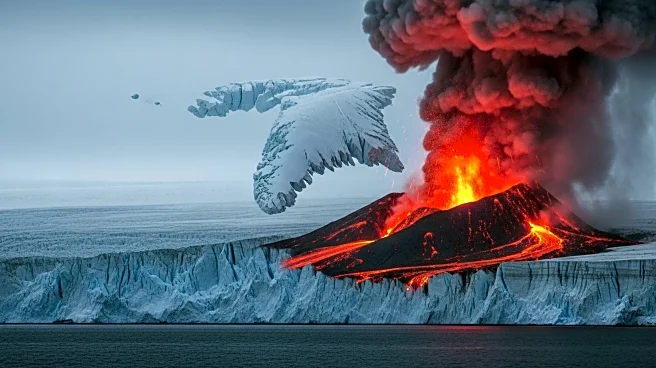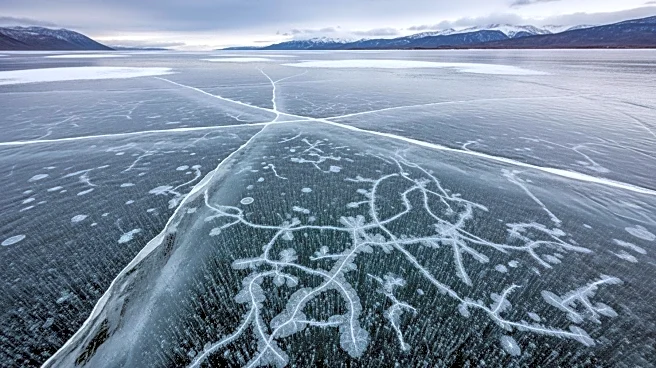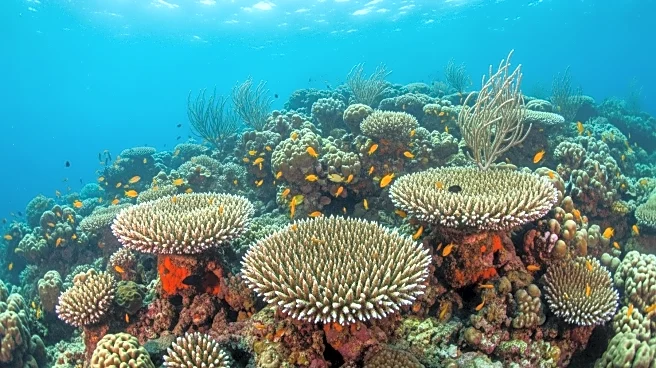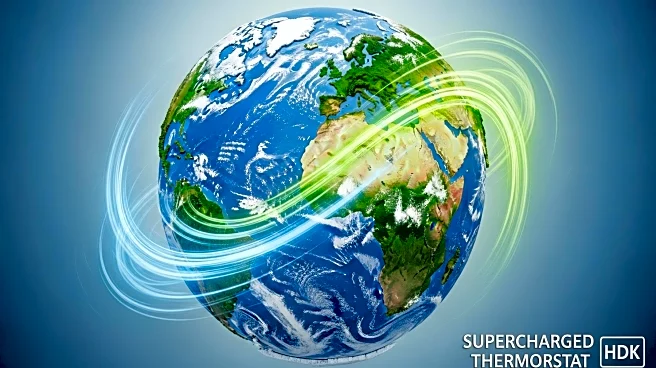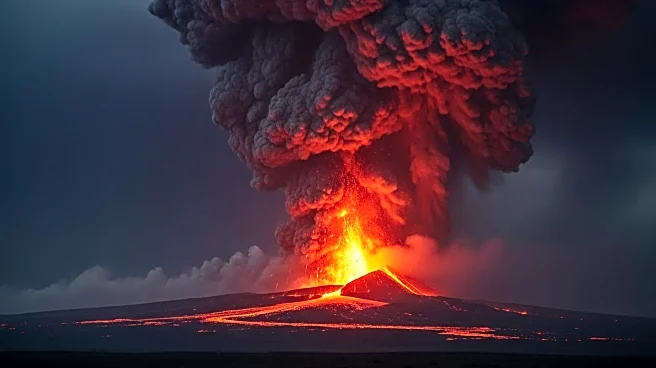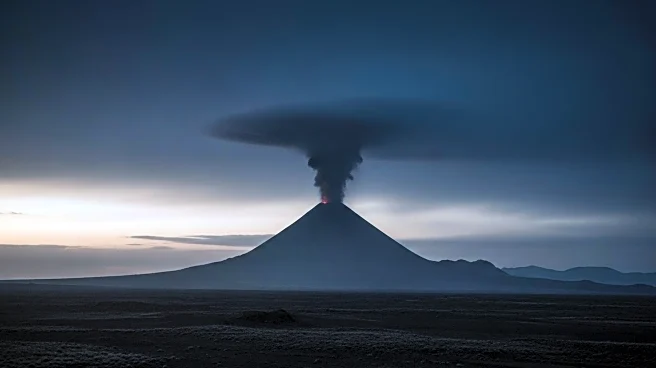What's Happening?
Recent research has suggested that a volcanic eruption, rather than a meteorite or comet impact, may be responsible for a mysterious platinum spike found in Greenland's ice sheet. This spike, dated to around 12,800 years ago, coincides with the onset of the Younger Dryas Event, a period of significant cooling in the northern hemisphere. The study proposes that volcanic activity in Iceland, particularly submarine or subglacial eruptions, could have released platinum-rich gases that traveled to Greenland, depositing the unusual chemical signature. This challenges previous theories that attributed the spike to an extraterrestrial impact.
Why It's Important?
Understanding the causes of historical climate events like the Younger Dryas is crucial for predicting future climate changes. The volcanic explanation for the platinum spike suggests that Earth's climate can be significantly influenced by volcanic activity, which can lead to cooling by releasing sulphur into the atmosphere. This insight is vital for climate scientists and policymakers as they prepare for potential future volcanic events that could impact global temperatures and weather patterns.
What's Next?
Further research is needed to explore the volcanic hypothesis and its implications for climate science. Scientists may investigate other geological samples and ice core data to confirm the volcanic origin of the platinum spike. Additionally, understanding the mechanisms by which volcanic eruptions affect climate could lead to improved models for predicting climate changes and preparing for their impacts.
Beyond the Headlines
The study highlights the importance of interdisciplinary research in solving complex scientific mysteries. By combining geological, chemical, and climate science, researchers can develop more comprehensive explanations for historical events. This approach may also uncover new insights into the interactions between Earth's geological processes and climate systems.
